
Sapphire Gemstone: Kɔla, Nkyerɛase, Bo & Mfaso
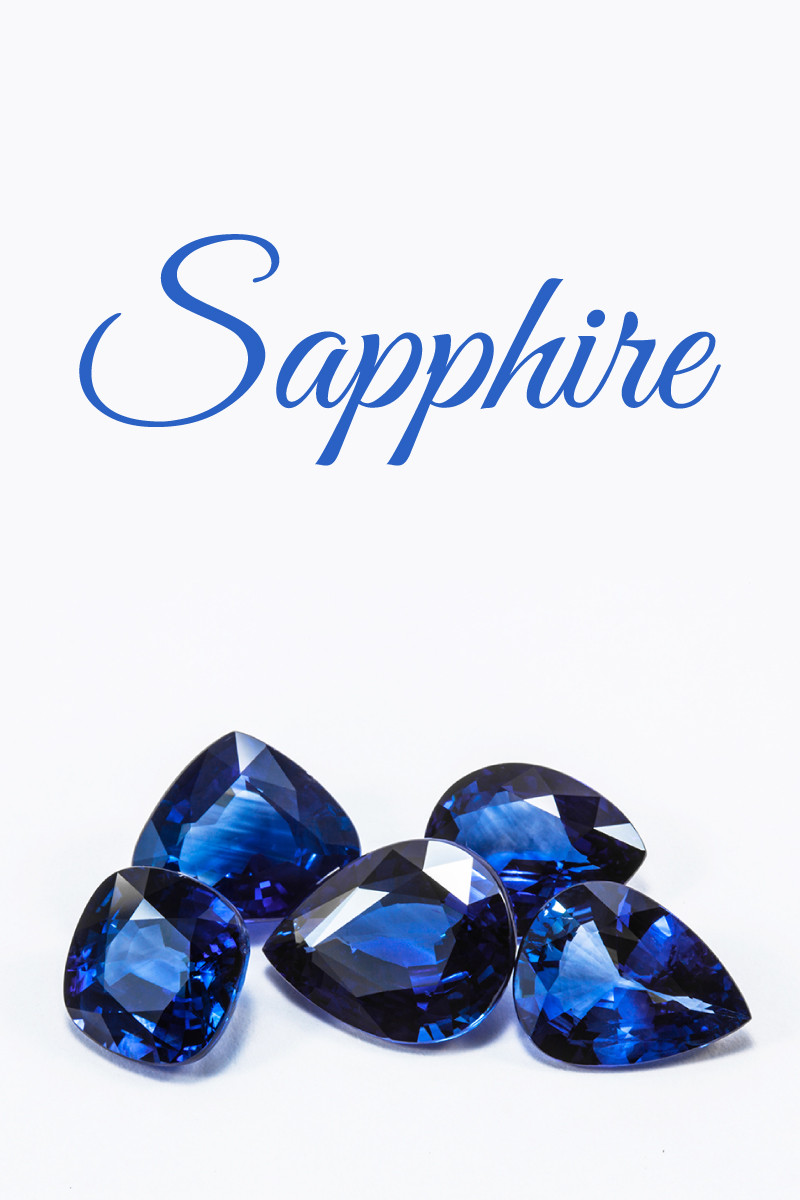 Safire yɛ aboɔden abo a wɔfrɛ no corundum a wɔdɔ no esiane nneɛma pii nti wɔ abakɔsɛm nyinaa mu. Sɛ ne kɔla fɛfɛ da nkyɛn a, nkurɔfo abu safir wɔ honhom fam tumi a wɔkyerɛ ne nea ɛtra hɔ kyɛ wɔ mfiridwuma mu no ho.
Safire yɛ aboɔden abo a wɔfrɛ no corundum a wɔdɔ no esiane nneɛma pii nti wɔ abakɔsɛm nyinaa mu. Sɛ ne kɔla fɛfɛ da nkyɛn a, nkurɔfo abu safir wɔ honhom fam tumi a wɔkyerɛ ne nea ɛtra hɔ kyɛ wɔ mfiridwuma mu no ho.
Ɛyɛ den sɛ wobɛtetew safir ne bruu mu, ɛmfa ho sɛ ɔbo no de nyankontɔn a ɛwɔ kɔla afoforo ba no. Nokwarem no, asɛmfua “safire” kaa lapis lazuli ne aboɔden abo afoforo a ɛyɛ bruu ho asɛm kosii Mfinimfini Mmere no mu. Ɛnnɛ, “safire bruu” yɛ n’ankasa kɔla a ɛwɔ aboɔden abo no akyi, a wohu wɔ adwinni ahorow mu.
Dɛn ne safir kɔla a wɔntaa nhu? Ɛnyɛ nea wɔatwitwa na ɛyɛ nwunu, nanso aboɔden abo ho animdefo dodow no ara bɛka sɛ Kashmir bruu anaa Padparadscha safir ho yɛ na sen biara.
Wonnye saa nsɛmfua no ntom? Nha wo ho! Saa akwankyerɛ yi bɛbubu safir aboɔden aboɔ kɔla ne ahodoɔ biara, ne saa anansesɛm mu aboɔden aboɔ yi abakɔsɛm, ne boɔ, ne ne nkyerɛaseɛ.
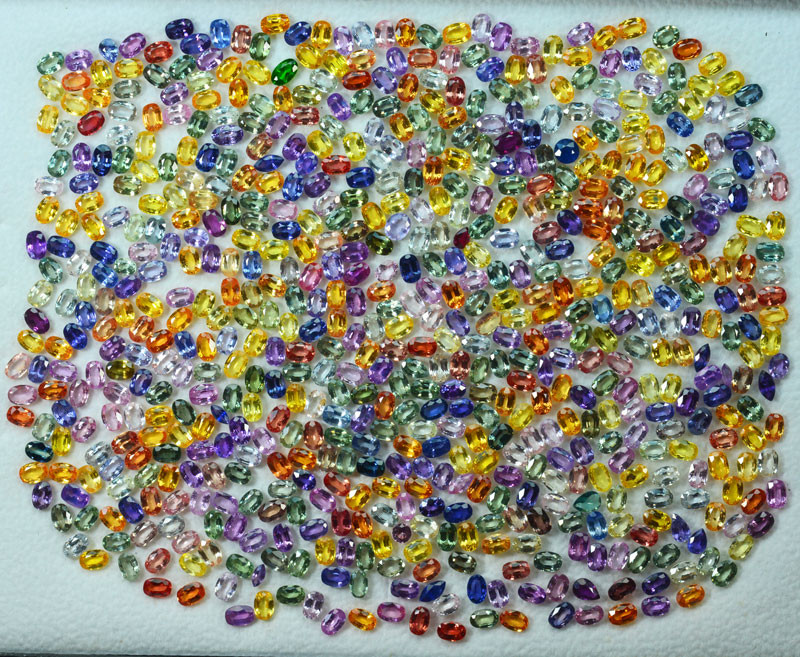
Ɛfa Sapphire Stone ho
Ɛmfa ho ne kɔla no, safir yɛ aboɔden abo anan a ɛsom bo no mu biako . Safir awobo no hyɛ wɔn a wɔwoo wɔn wɔ September mu no anuonyam , ɛwom sɛ abakɔsɛm mu no na ɛyɛ awobo ma April de . Ɔbo no nso yɛ ayeforohyia afe a ɛto so 5, 45, ne 65 abohene. Wɔ nsoromma mu hwɛ mu no, safir yɛ Taurus nsoromma mu hwɛ abo.
Safir kɔla ahorow bi ho hia wɔ Ayurveda (anaa Hindu) nsoromma mu hwɛ mu. Wɔ saa adeyɛ yi mu no, safir bruu a wɔfrɛ no Neelam yɛ Saturn nsoromma bo bere a safir kɔkɔɔ, anaa Pukhraj , yɛ Jupiter ɔbo.
Sapphire yɛ ɔman no aboɔden abo a aban no de di dwuma wɔ Montana, U.S.A., ne Queensland, Australia.
Wɔ agude akyi no, safir wɔ mfiridwuma mu nneɛma bi a ɛho hia, a nea ɛka ho ne:
Watches
Ɛlektrɔnik mfiri a wɔde yɛ wafer
Semiconductor afã horow
LED substrates a wɔde yɛ nneɛma
Mfɛnsere a ɛyɛ den kɛse (a nea wɔde yɛ infrared optics ka ho) .
Sɛ wowɔ Apple Watch no dade a ɛnyɛ den anaa titanium mfonini a, ebia na safir ahwehwɛ na ɛwom!
Ade biako nti a safir ho wɔ mfaso wɔ mfiridwuma mu ne ne dibea a ɛkorɔn wɔ Mohs mineral hardness scale , su ahorow a yɛbɛka ho asɛm akyi no mu biako.
Sapphire Nkyerɛkyerɛmu & Su ahorow
Safir yɛ corundum ahorow abien no mu biako , na biako nso ne ruby . Aluminium oxide na ɛyɛ corundum aboɔden abo.
Mpɛn pii no, safir yɛ ahwehwɛ a ɛyɛ tratraa a ɛyɛ prismatic, ɛte sɛ toa, anaa bipyramidal.
Wɔ ase ha no, yɛakyerɛw safire ahoɔden a ɛwɔ abo mu.
(Sɛ wopɛ safir kɔla ahorow pɔtee te sɛ pleochroism anaa luminescence kɔla ahorow a, hwɛ safir kɔla akwankyerɛ biara a wɔde abata ho wɔ ɔfã a edi hɔ no mu.)
Aboɔden abo abusua : Corundum
Mohs a ɛyɛ den : 9
Kɔla : Kɔla nyinaa gye kɔkɔɔ; Kɔla-zoning a ebetumi aba
Ahwehwɛ nhyehyɛe : Ahinanan (afã abiɛsa) .
Luster : Vitreous (ahwehwɛ) kosi sub-adamantine
Transparency : Ɛyɛ nea ɛda adi pefee kosi nea ɛnyɛ nea ɛda adi pefee
Nneɛma a ɛma hann yɛ hyew : 1.757-1.779
Nnipa dodow : 3.99-4.10
Cleavage : Biara nni hɔ
Akisikuru : Conchoidal
Streak : Ɛyɛ fitaa
Luminescence : Fluorescence a ɛwɔ safir nyinaa mu gye tuntum, ahabammono, ne bruu dodow no ara (abɔde mu de), ɛsono ne kɔla nyinaa (a wɔde ayɛ); X-ray kɔla ahorow a ɛwɔ nhwɛsode ahorow bi a efi Sri Lanka, Kashmir, ne Montana - kɔkɔɔ a ɛyɛ kusuu anaa kɔkɔɔ-akutu
Pleochroism : Mprempren & ɛyɛ den yiye wɔ safir kɔla dodow no ara mu
Nsonsonoe abien : 0.008-0.009
Ntrɛwmu : 0.018
Nsunsuanso a ɛwɔ aniwa so : Asterism, chatoyancy, kɔla a ɛsakra
Afei, safir kɔla ahorow ne dɛn?
Safir Kɔla ahorow a Wɔahyehyɛ
Wobu corundum a ɛnyɛ kɔkɔɔ nyinaa sɛ safir, a ɛkyerɛ sɛ ɛkame ayɛ sɛ safir wɔ kɔla foforo biara. Kɔla ahorow ho yɛ na, agye din kɛse, anaasɛ ɛsom bo kɛse. Kɔla biara fi efĩ ahorow mu.
Momma yɛmfa safir kɔla a wɔtaa de di dwuma no mfi ase: bruu.
Safir a Ɛyɛ Bruu
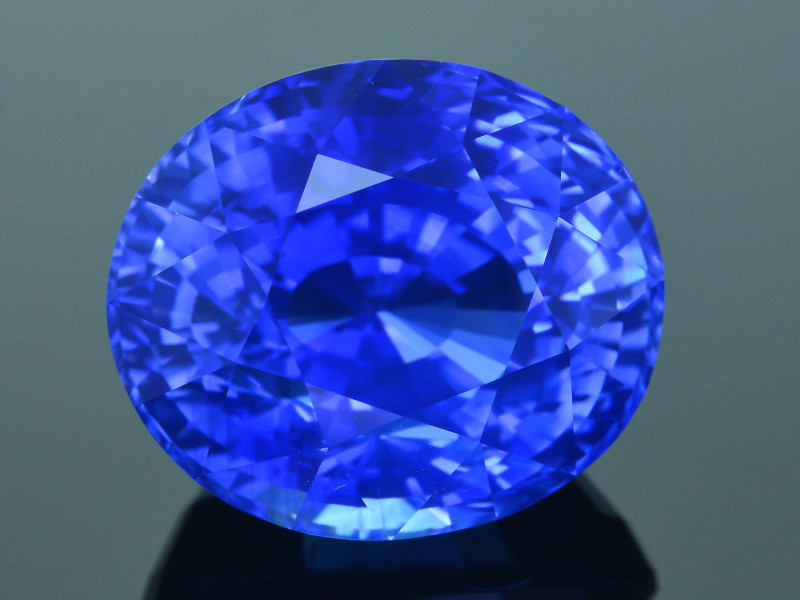
Akyinnye biara nni ho sɛ bruu ne safir kɔla a agye din sen biara, a wɔakyekyere no wɔ ɔbo no ho wɔ abakɔsɛm nyinaa mu. Saa kɔla yi fi dade ne titanium efĩ mu, na titanium pii ma ɛyɛ tuntum.
Nnyigyei a ɛto so abien biara a ɛwɔ ase (te sɛ violet anaa ahabammono) betumi ayɛ kɔla a ɛwɔ ɔbo no nyinaa mu ɔha biara mu nkyem 15 anaa nea ennu saa pɛ ma wɔabu no sɛ safir bruu.
Wɔhwehwɛ safir bruu kɛse, na ɛma ne bo yɛ den sen kɔla afoforo, ɛmfa ho sɛ ɛntaa nsi saa no.
Ɛno akyi no, nsunsuanso ahorow bi ho yɛ na na ɛsom bo sen afoforo.
Safir bruu ahorow atitiriw ne:
Kashmir : Wobu no kɛse sɛ ɛyɛ safir kɔla a eye sen biara, atoko nhwiren bruu a emu dɔ a ɛte sɛ velvet esiane sirikyi a wɔde ka ho nti, efi Himalaya mmepɔw so nanso ɛntaa nsi koraa.
Cornflower Blue : Bruu (atoko nhwiren) sunsuma a ɛho tew, ɛda nsow wɔ Kashmir ho denam mmeae afoforo a efi hɔ no so.
Royal Blue : Bruu a emu dɔ na ɛyɛ pefee a ɛwɔ ase a ɛyɛ kɔkɔɔ kosi violet.
Ice Blue : Bruu a ɛyɛ mmerɛw a ɛte sɛ nsukyenee a ɛtaa yɛ ahabammono a ɛwɔ ase.
Yogo : Safir a ɛyɛ bruu a ɛyɛ atoko nhwiren a ɛyɛ fɛ a efi Yogo Gulch a ɛwɔ Montana, U.S.A.
Ceylon (Sri Lankan) : Safir bruu a ɛyɛ mmerɛw kosi nea ɛyɛ dɛ a ɛyɛ ma kɛse, ɛhyerɛn, na ɛhyerɛn, a wonya fi Sri Lanka.
Nokwarem no, eyi nkata sunsuma biara so. Wubehu nkyerɛkyerɛmufo pii te sɛ baby blue, indigo, navy, twilight, ne nea ɛkeka ho.
Wɔfrɛ safir a ɛnyɛ bruu a aka no nyinaa sɛ safir “a ɛyɛ fɛ” anaa “kɔla a ɛyɛ fɛ.”
Safir a Ɛyɛ Pink
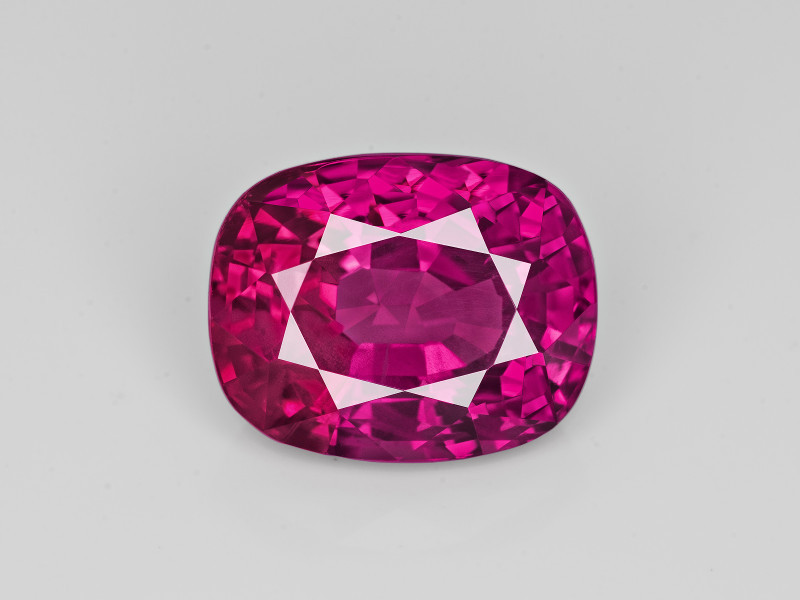
Safir a ɛyɛ pink wɔ kɔla kɔkɔɔ a ɛyɛ hare esiane chromium efĩ kakraa bi nti. Nnyigyei a wɔtaa de di dwuma wɔ ase no yɛ kɔkɔɔ, borɔdɔma, anaa kɔkɔɔ. Nneɛma a agye din ne baby pink ne magenta.
Aboɔden abo ho animdefo nnye ntom wɔ nsonsonoe pɔtee a ɛda rubi ne safir a ɛyɛ pink ntam no ho. Ebinom kyekyɛ corundum a ne kɔla yɛ pink mu sɛ rubies, bere a afoforo nso bu corundum abo a ɛyɛ kɔkɔɔ titiriw no mu sɛ rubies.
Esiane sɛ rubi ho yɛ na nti, ebia wɔn a wɔtɔn no pii bɛpaw sɛ wɔbɛkyerɛw corundum a ɛyɛ pink sɛ “ruby” de ahyɛ ne bo agyirae, enti ma ɛno ntra w’adwenem bere a woretɔ nneɛma no.
Safir a Ɛyɛ Kɔkɔɔ
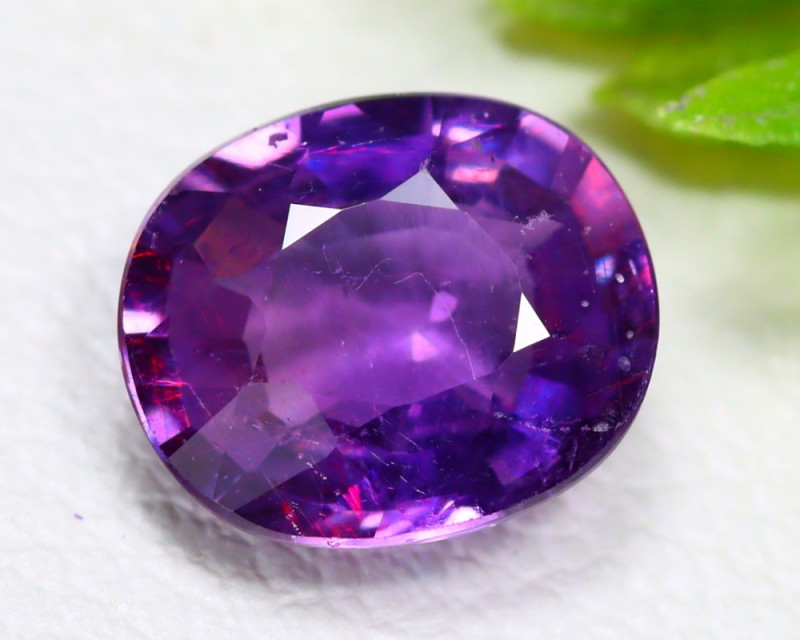
Safir a ɛyɛ kɔkɔɔ ho yɛ na koraa. Wɔn kɔla kɔkɔɔ no betumi afi vanadium anaa chromium, titanium, ne dade a ɛyɛ dade a wɔaka abom mu. Nnyigyei a wɔtaa de di dwuma wɔ ase ne kɔkɔɔ, pink, bruu, ne fitaa.
Sɛ yɛhwɛ bo a ɛsom a, safir a ɛyɛ kɔkɔɔ no hwe ase wɔ bruu ase nanso ɛboro kɔkɔɔ ne ahabammono so.
Nhwɛso biako a agye din (anaasɛ agye dimmɔne) ne Delhi Purple Sapphire, a ɛyɛ amethyst ankasa .
Safir a Ɛyɛ Kɔkɔɔ

Wɔde safir kɔkɔɔ a ɛsom bo sen biara no yɛ ɛnne a ɛyɛ hann kosi tuntum, na ɛyɛ canary kɔkɔɔ a ɛyɛ hyew a ɛsom bo sen biara. Kɔla kɔkɔɔ no fi ferric iron (Fe3+) efĩ mu. Nnyigyei a wɔtaa de di dwuma wɔ ase ne ahabammono, borɔdɔma, bruu, ne pink.
Wɔfrɛ safir kɔkɔɔ wɔ Hindufo nsoromma mu hwɛ mu Pukhraj na wɔne Jupiter yɛ adwuma.
Safir a ɛyɛ borɔdɔma
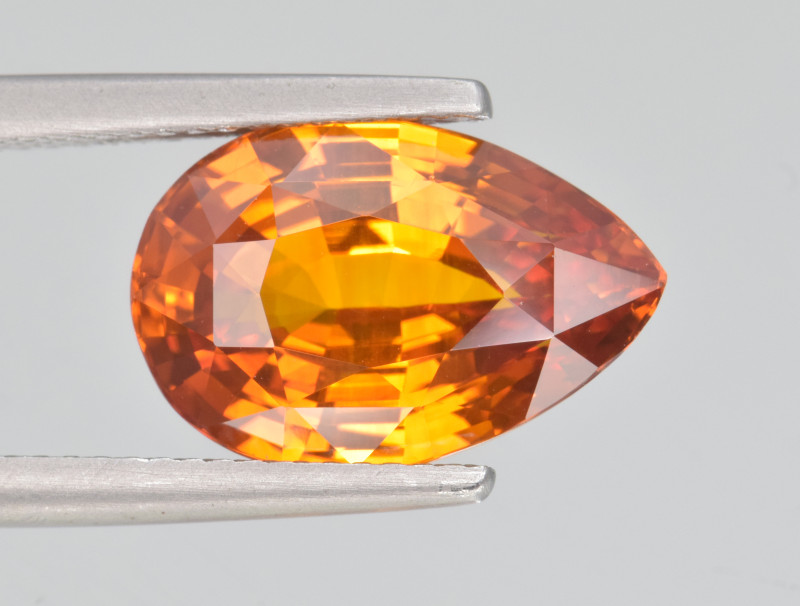
Safir a ɛyɛ borɔdɔma ye sen biara wɔ kɔla a ɛyɛ hyew, kɔkɔɔ-akutu anaa borɔdɔma a ɛho tew mu. Kɔla no betumi afi chromium ne dade efĩ a wɔaka abom anaasɛ mframa a wɔde bɔ (abɔde mu anaasɛ lab-a ɛde ba) mu. Nnyigyei a wɔtaa de di dwuma wɔ ase no yɛ kɔkɔɔ, kɔkɔɔ, bruu, anaa pink.
Wɔde beryllium a ɛtrɛw a ɛma safir a ɛyɛ ahabammono a ɛyɛ hare kɔ kɔkɔɔ ma ɛbɛyɛ borɔdɔma a ɛyɛ hyew ayɛ safir a ɛyɛ borɔdɔma bi ho adwuma.
Green Sapphire a ɛyɛ ahabammono

Efi pastel so kosi kwae mu ahabammono a emu dɔ so no, safir a ɛyɛ ahabammono yɛ nea wotumi de yɛ nneɛma pii na ɛdɔɔso. Kɔla no fi ferric iron (Fe3+) ne ferrous iron (Fe2+) efĩ a wɔadi afra mu. Nnyigyei a wɔtaa de di dwuma wɔ ase no yɛ kɔkɔɔ, a ɛyɛ fitaa
Sɛ́ ɛdɔɔso na ɛwɔ radar ase no ma safir a ɛyɛ ahabammono no yɛ nea wɔmfa sika pii nyɛ, sɛ nea wɔde si emerald ananmu mpo.
Safir Fitaa a wɔfrɛ no Safir

Safir fitaa betumi ayɛ fitaa anaasɛ enni kɔla a egyina sɛnea ɛda adi na emu da hɔ so. Eyi ne corundum a ɛho tew sen biara, a efĩ kakraa bi anaasɛ enni mu koraa. Abɔde mu de no ho yɛ na koraa, enti dodow no ara a wɔtɔn wɔ gua so no yɛ nea wɔayɛ anaasɛ wɔayɛ ho adwuma.
Saa safir yi yɛ ayeforohyia mpɛtea a wɔtaa de si ananmu a ɛnyɛ daimond .
Safir Tuntum a wɔfrɛ no Black Sapphire
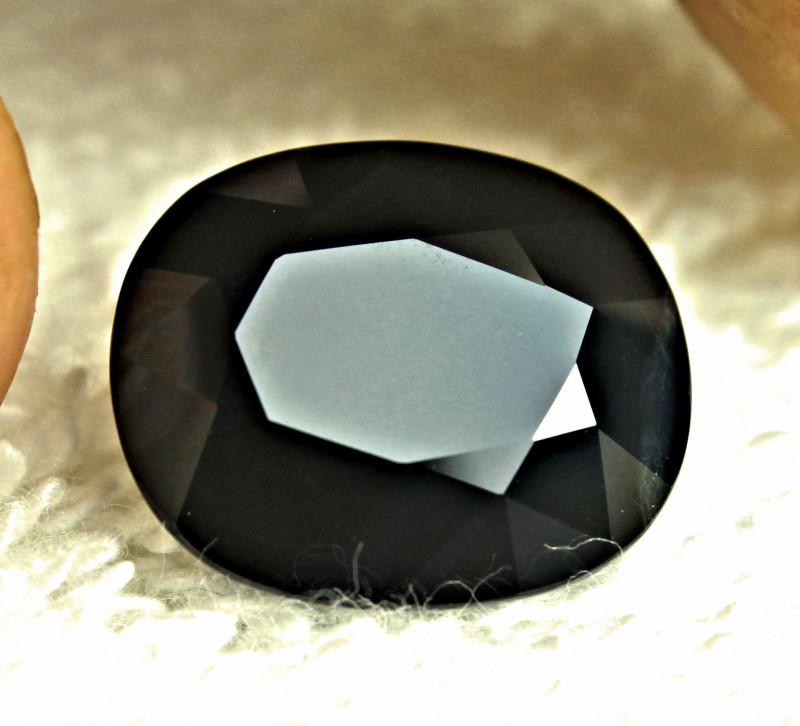
Safir tuntum yɛ nea wɔnhwehwɛ pii, a ɛnyɛ nea ɛda adi pefee a wɔde dade ne titanium pii na ɛyɛ kɔla. Ebia ɛbɛyɛ bruu tuntum kɛse, ahabammono, kɔkɔɔ, anaa fitaa ankasa. Aguadeyɛfo dodow no ara bu safir tuntum sɛ ɛnyɛ papa gye sɛ ɛyɛ nsoromma tuntum safir.
Nea ɛyɛ soronko no, nsoromma tuntum safir nya wɔn “nsoromma” fi hematite ne ilmenite a wɔde ka ho no mu. Ɛtɔ mmere bi a, saa nsoromma safir yi yɛ hann fitaa ne sika kɔkɔɔ hann 12.
Wɔ safir mu no, tuntum nkutoo ne nea ɛyɛ magnetic a ano yɛ den.
Safire a Ɛyɛ Bruu
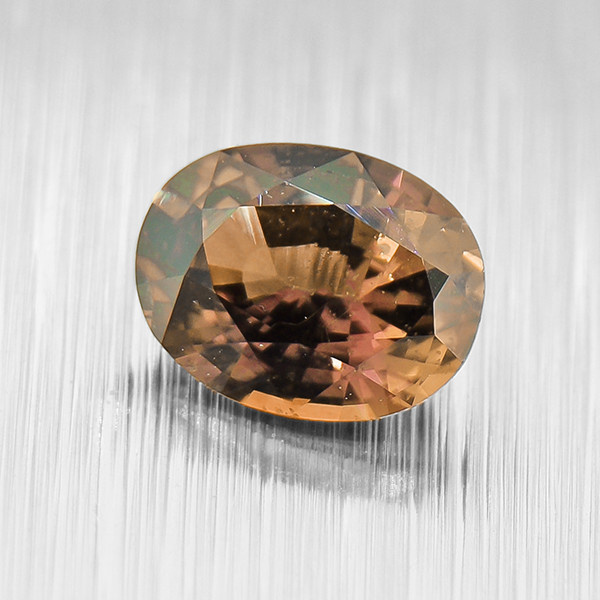
Nnansa yi ara na safir a ɛyɛ bruu fii ase gyee din bere a chocolate diamond kɔɔ soro no . Safir a ɛyɛ bruu a ɛyɛ aboɔden abo ho yɛ na kakra. Wɔn kɔla fi dade ne ɛtɔ mmere bi a titanium mu.
Wɔtaa kyerɛw nhwɛsode ahorow a emu dɔ na ɛyɛ den sɛ “chocolate sapphires.” Aguadi din foforo ne “cognac,” a wɔde frɛ safir a ɛyɛ kɔkɔɔ-biribiri anaa kɔkɔɔ-akutu. Nnyigyei afoforo a ebetumi aba wɔ ase ne kɔkɔɔ, pink, ne tuntum.
Afei, yɛbɛkɔ safir ahorow bi a wɔntaa nhu na ɛyɛ anigye so.
Safire Ahorow Ahorow
Sɛ kɔla biako pɛ na wɔkyekyɛ mu a, wonim safir binom sɛ wɔwɔ su afoforo, sɛ́ ɛyɛ kɔla ahorow a wɔaka abom, fibea ahorow a ɛda nsow, anaasɛ nneɛma a wotumi hu.
Padparadscha Safir a wɔde yɛ nneɛma

Padparadscha safir ka safir a wɔn ho yɛ na na ɛsom bo sen biara no ho. Wɔ atetesɛm mu no wofi Sri Lanka, na wɔde Sanskrit asɛmfua a ɛkyerɛ “lotus nhwiren” na ɛtoo din.
Wogye kɔla a wɔhwehwɛ pɛpɛɛpɛ ho akyinnye, nanso akyinnye biara nni ho sɛ ɛyɛ pink ne borɔdɔma a wɔaka abom, na ɛtɔ mmere bi a wɔka ho asɛm sɛ “owiatɔe,” “apricot,” anaa “peach.”
Peacock anaa Mermaid Safire a wɔfrɛ no Sapphires
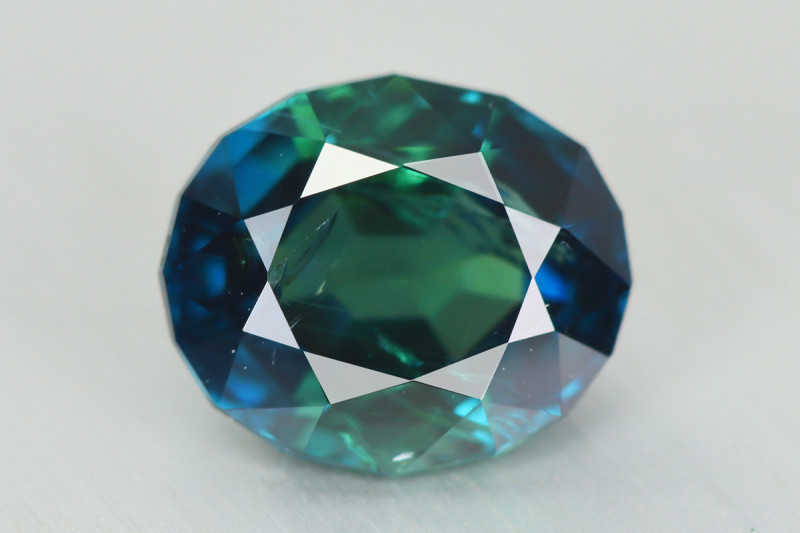
Teal safir wɔ bruu ne ahabammono titiriw, na ɛtɔ mmere bi a ɛwɔ ase kɔla kɔkɔɔ. Eyinom ama agye din kɛse nnansa yi.
Sɛnea bruu ne ahabammono yɛ pɛ no betumi ayɛ soronko. Sɛ ɛyɛ 50-50 a wɔde afra a, wubenya “peacock” anaa “mermaid” sapphire a ebetumi ayɛ te sɛ Paraiba tourmaline . Dodow no ara fi Montana, U.S.A.
Safir a Ɛwɔ Kɔla Abien anaasɛ Ɛwɔ Kɔla Abien

Sɛ́ anka wɔde kɔla abien bɛfrafra mu no, safir binom da kɔla ahorow abien adi prɛko pɛ esiane kɔla ahorow a wɔahyehyɛ nti. Wɔfrɛ eyinom sɛ safir a ɛwɔ kɔla abien, kɔla abien, kɔla fã bi, anaa kɔla ahorow pii.
Safir a ɛwɔ kɔla abien ho yɛ na koraa. Dodow no ara yɛ ahabammono ne kɔkɔɔ, bere a nea ɛntaa nsi (na ɛsom bo sen biara) yɛ bruu ne kɔkɔɔ anaa kɔla abiɛsa. Kɔla ahorow a ɛda nsow a wɔpaapae mu wɔ ɔbo no mfinimfini no ma wonya mfaso kɛse.
Safir a Ɛsakra Kɔla

Ahorow a wɔntaa nhu a wɔhwehwɛ ne safir a ɛsakra kɔla a ɛsakra kɔla wɔ kanea ahorow ase (mpɛn pii no awia hann ne kanea a ɛyɛ hyew).
Dodow no ara yɛ bruu anaa kɔkɔɔ wɔ awia hann mu na violet anaa kɔkɔɔ-kɔla kɔkɔɔ wɔ incandescence ase. Nneɛma ahorow a wɔntaa nhu no sesa:
Ɛyɛ ahabammono kosi kɔkɔɔ anaa kɔkɔɔ-biribiri
Kɔkɔɔ kosi bruu
Ɛyɛ ahabammono kosi kɔkɔɔ-ahabammono
Adeɛ a ɛsom boɔ a ɛkorɔn wɔ ha ne ahoɔden a ɛwɔ kɔla-sesa no mu (kyerɛ sɛ ɛyɛ mmerɛ, ɛyɛ mmerɛ, anaa ɛyɛ den).
Nsoromma Safir

Nneɛma bi a wɔde ka ho (mpɛn pii no, diaspore anaa rutile , a ɛyɛ akuwakuw a ɛne ne ho di nsɛ) betumi ama hann a ɛte sɛ nsoromma a ɛdannan, adeyɛ a wɔde aniwa hu a wɔfrɛ no asterism. Nea efi mu ba ne “nsoromma safir” a wɔde nsoromma ayɛ no.
Nsoromma safir wɔ kɔla dodow no ara, ɛwom sɛ nea ɛyɛ borɔdɔma, ahabammono, ne kɔkɔɔ ho yɛ na koraa de. Dodow no ara wɔ nsoromma a ɛyɛ hann asia, nanso safir a ɛyɛ bruu tuntum anaa tuntum bi a wɔntaa nhu koraa betumi anya nsoromma a ɛyɛ hann 12.
Nsoromma safir a wɔpɛ sen biara no yɛ bruu a ɛda adi na emu dɔ a nsoromma a ɛhyerɛn, ɛda nsow, na ɛyɛ pɛ kɛse.
Trapiche Safir a wɔde yɛ nneɛma

Safir ahorow a ɛte sɛ nsoromma mu hwɛ ne trapiche safir. Eyinom nso wɔ 6-rayed nsoromma-te sɛ nsoromma esiane nneɛma a wɔde aka ho nti, nanso “nsoromma” no nkyerɛ hann. Ɛte sɛ ntwahonan nhama kɛse.
Saa nkɛntɛnso yi ba bere a carbonaceous a ɛka ho no kɔtra mmeae a enyin ntam wɔ tebea horow a ɛnyɛ nea ɛtaa ba a wɔhyehyɛ mu no. Nhwɛso a agye din ne Brazilfo trapiche emerald .
Sɛ yɛtiatia ɔbo no honhom fam fã a, dɛn na safir yɛ ho sɛnkyerɛnne?

Sapphire Nkyerɛase & Abakɔsɛm
Sɛ yɛka ne nyinaa bom a, mpɛn pii no, safir yɛ nyansa, ɔsoro, ne nokwaredi ho sɛnkyerɛnne, nanso kɔla biara kura sɛnkyerɛnnede pɔtee bi.
Safir kɔla ne nea ɛkyerɛ ne:
Blue : Nokwaredi & ahofama
Pink : Ɔdɔ & bɔne fafiri
Purple : Honhom mu nyansa & ahotoso
Yellow : Odi nkonim & nimdeɛ
Orange : Adebɔ & anigye
Green : Kommyɛ & kari pɛ
White : Intuition & ahofadi
Black : Ahoɔden & tumi
Brown : Ahobammɔ & ahoɔden a wɔde gyina ano
Na safir amammerɛ mu ntease ahorow nso ɛ?
Sapphire Amanneɛbɔ & Anansesɛm
Esiane sɛ safir atra hɔ mfe mpempem pii nti, wɔanya anansesɛm pii.
Wɔ Islam mu no, wɔka ɔsoro a ɛtɔ so nson no ho asɛm sɛ ɛwɔ safir. Yudafo kyerɛwsɛm bobɔ safir din ka Ɔsɔfo Panyin Koko so abo dumien no ho na ɛka Onyankopɔn ahengua a ɛwɔ soro no ho asɛm sɛ wɔde safir na ɛyɛe.
Kristofo Apam Foforo no de safir ka ho sɛ Yerusalem Foforo fapem abo dumien no mu biako. Ná Kristofo gye di sɛ safir gyina hɔ ma ahotew, onyamesom pa, ne ɔsoro nhyira. Atetesɛm bi ka sɛ wɔkyerɛw Mmara Nsɛm Du no wɔ safir so.
Bio nso, Kristofo binom frɛ nsoromma safir “Nkrabea Abo,” na wogye di sɛ wɔn nsoromma a ɛwɔ hann asia no mmeamudua abiɛsa no gyina hɔ ma gyidi, anidaso, ne nkrabea su pa ahorow.
Tete Helafo de safir hyɛɛ Apollo, owia nyame anuonyam. Ná wogye di nso sɛ ɔbo no duu ahonhom atrae, enti na nnipa pii hyɛ bere a wɔne Delphi Ɔkyerɛkyerɛfo no resusuw ho no. Afeha a ɛto so 12 Helafo anansesɛm bi ka sɛ na wɔpɛ Helen a ofi Troy yiye efisɛ na ɔwɔ nsoromma kɛse bi a wɔfrɛ no safir.
Ɛdefa safir mfiase ho no, tete Persiafo anansesɛm bi sii so dua sɛ Asase te safir kɛse bi so, na ne hann ma wim yɛ bruu.
Tete ahemfo gye di sɛ safir a wɔhyɛ no bɔ wɔn ho ban fi ahoɔyaw ne awuduru ho. Nokwarem no, na safir a wɔde di dwuma sɛ agyan a ɛbɔ wɔn ho ban no atrɛw.
 Mfonini a ɛwɔ atifi hɔ no: Ɔhene Alarich II (484-587) signet bo. Wɔkan saa sɛnkyerɛnnede yi ka Germanfo adehye nsɛnkyerɛnne a akyɛ sen biara no ho. Ahwehwɛ mfonini a wɔatwa ho ahyia no kenkan sɛ: ALARICVS REX GOTHORVM = Alarich, Gothfo hene. | Mfonini no fi: James Steakley, Creative Commons Attribution-Share Alike 3.0 Tumi krataa a wɔmfa nkɔ
Mfonini a ɛwɔ atifi hɔ no: Ɔhene Alarich II (484-587) signet bo. Wɔkan saa sɛnkyerɛnnede yi ka Germanfo adehye nsɛnkyerɛnne a akyɛ sen biara no ho. Ahwehwɛ mfonini a wɔatwa ho ahyia no kenkan sɛ: ALARICVS REX GOTHORVM = Alarich, Gothfo hene. | Mfonini no fi: James Steakley, Creative Commons Attribution-Share Alike 3.0 Tumi krataa a wɔmfa nkɔ
Tete & Mfinimfini Mmere mu Abakɔsɛm
Safir ho kyerɛwtohɔ a akyɛ sen biara ne agude a efi 600-275 A.Y.B. Ná safir no fi Sri Lanka, beae a akyɛ sen biara na ɛho hia sen biara a wonya safir fibea no.
Nnipa pii huu no bɛyɛ afe 1200 Y.B., bere a Marco Polo kyerɛw Sri Lanka safir ho asɛm wɔ n’adwuma, Book of the Marvels of the World , mu akyi. Mfinimfini Mmere mu ahemfo hyɛ safir de bɔ wɔn ho ban, abakɔsɛm mu adeyɛ a ɛkɔ so daa wɔ atitiriw mu.
Bɛyɛ afe 1100 Y.B. Ná asɔfo nso hyɛ safir bruu de yɛ ɔsoro ho sɛnkyerɛnne.
Bɛyɛ saa bere no ara mu no, Nkramofo nyansahufo Al-Biruni hui sɛ safir ne rubi yɛ aboɔden abo koro no ara bere tenten ansa na nnɛyi aboɔden abo ho animdefo reba.

Nnɛyi Abakɔsɛm
Asaawa biako a efi tete besi nnɛ ne safir ayeforohyia nkaa. Nnɛyi ayeforohyia mpɛtea adeyɛ no fii ase wɔ 1400 kosi 1500 mfe no mu bere a adefo ne adehye maa agye din no.
Ná safir yɛ ɔbo a nkurɔfo ani gye ho a wɔpaw, efisɛ na wobu aboɔden abo a ɛsom bo a ɛnyɛ daimond sɛ ɛsom bo kɛse. Nokwarem no, na safir bruu ayeforohyia nkaa ne mfinimfini ɔbo a wɔtaa paw wɔ U.S. ansa na daimond rebɛyɛ gyinapɛn wɔ 1900 mfe no mfiase mu hɔ.
Bere a nnɛyi safir agude trɛw kɔ akyiri sen adefo atitiriw no, ahemfo ama agye din no akɔ so. Nhwɛso biako a agye din ne Marguerite mpɛtea, Ɔhemmaa Diana ayeforohyia mpɛtea a wɔde Ceylon safir a emu duru yɛ karat 12 di agoru.
Sɛ ahemfo ne mpapahwekwa nyinaa siesie da nkyɛn a, dɛn na safire ye ma nnɛ?

Safire Ayaresa Nneɛma
Safire akɔ so ayɛ ɔbo a ɛsom bo a wɔde sa yare de besi nnɛ.
Abodin ahorow bi a wɔde frɛ safir sɛ ahwehwɛ a ɛsa yare no bi ne:
Ɔbo a Ɛfa Adwene mu Adwene & Nhyehyɛe
Ɔbo a Ɛfa Nkrabea Ho
Ɔdɔ Foforo Ɔbo
Ɔbo a Ɛma Yiyedi
Ɔbo a Wɔde Yɛ Ahofama
Continuing past traditions, sapphires da so ara yɛ agye din third eye chakra stones , bue saa ahoɔden beae yi ma wo nkate ne honhom mu nhumu tu mpɔn.
Nipadua mu Ayaresa
Mfaso a wɔkyerɛ sɛ ɛwɔ honam fam safir abo so no bi ne ɔhaw ahorow a wɔsa anaasɛ wɔboa wɔ:
Anisoadehunu
Atiridiinini a ɛyɛ hu
Asoroben
Atiridiinini
Nkwammoaa a ɛko tia nyarewa no dwumadi
Wogye di nso sɛ safir ma wo nkatede tu mpɔn.
Nkate mu Ayaresa
Wɔ nkate fam no, wɔka sɛ safir:
Fa ahomegye ma
Yi nsusuwii a ɛhaw adwene fi hɔ
Ma adwene a wɔde si biribi so no nkɔ soro
Hyɛ ahosodi ho nkuran
Ma adebɔ ho nimdeɛ nkɔ anim
Hyɛ akokoduru ho nkuran
Afei, yɛbɛkɔ sɛnea abenfo nam grading so kyerɛ safire bo a ɛsom no so.
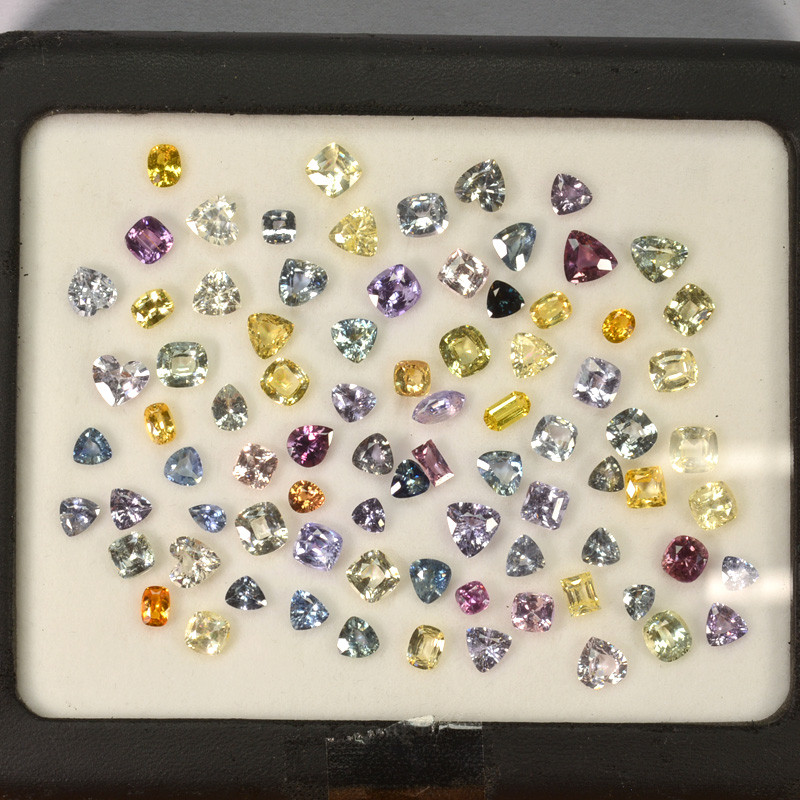
Sapphire Aboɔden abo Nneɛma a Ɛwɔ Hɔ
Safire bo gyina ɔbo no kɔla, ne twitwa, sɛnea emu da hɔ, carat mu duru, ayaresa, ne mfiase (abɔde mu ne nea wɔde ayɛ) so.
Ahosuo
Kɔla ne ade a edi kan a ɛma safir bo yɛ den. Saturation a emu yɛ den kosi nea emu da hɔ ne ɛnne a emu dɔ kosi nea emu dɔ ye sen biara. Kɔla a emu yɛ hare dodo, ɛyɛ tuntum dodo, anaa ɛyɛ fitaa no som bo kɛse.
Sɛ yɛhwɛ kɔla ahorow a ɛsom bo sen biara ne Kashmir bruu, Padparadscha, ne pink a ɛhyerɛn. Nea edi hɔ ne teal, afei purple/violet, na ahabammono, kɔkɔɔ, ne bruu di akyi. Safir tuntum (a ɛnyɛ nsoromma) na ne bo nyɛ den koraa.
Safir a ɛntaa nsi a ɛsakra kɔla ne nea ɛwɔ kɔla abien anaa abiɛsa nso som bo.
Twa
Ɛsɛ sɛ lapidarists (aboɔden abo a wotwa) susuw kɔla ahorow, pleochroism, sparkle, ne optical effects ho bere a wɔretwitwa sapphires no. Ntwitwiridii a eye sen biara no da safir no su ahorow a ɛwɔ hɔ no adi yiye a ɛne ne ho hyia yiye na ɛnyɛ mmeae a ɛyɛ sum.
Standard round, cushion, ne oval faceted cuts na agye din sen biara. Nneɛma a ɛsom bo kɛse, wɔ nhyehyɛe a ɛkɔ fam mu no, ne emerald, marquise, ne pear.
Ɛsɛ sɛ wotwitwa nsoromma safir sɛ cabochons . Safir a ɛnyɛ papa nso betumi abɛyɛ cabochons. Safire afoforo a wɔatwitwa no bi ne nwene ne nhwiren.
Ɛda adi pefee
Sapphires yɛ Type II kɔla aboɔden abo , a ɛkyerɛ sɛ wɔhwɛ kwan sɛ wɔde nneɛma nketenkete a wotumi hu bɛka ho. Mpɛn pii no, safir mu da hɔ yiye sen rubi. Ebinom a wɔyɛ agude grade sapphire pefee wɔ diamond pefee nsɛm mu — IF, VVS, ne nea ɛkeka ho.
Wɔn a ɛsom bo sen biara no wɔ VVS pefee — biribiara nni hɔ a wotumi hu a ɛka ho wɔ 10x kɛseyɛ ase — nanso eyinom ho yɛ na a ɛyɛ nwonwa. Nea emu da hɔ a ɛsom bo a ɛba fam koraa ne SI kosi I (wɔde ka ho kakra kosi nea ɛka ho). Safir dodow no ara hwe ase wɔ mfinimfini, efi VS kosi SI (kakra koraa kosi kakra ka ho).
Nneɛma a wɔtaa de ka safir ho no bi ne:
Silk (asaawa atenten, ɛyɛ fɛ, na ɛyɛ tratraa, a mpɛn pii no wɔde rutile na ɛyɛ) .
Hexagonal kɔla banding anaasɛ onyin nkyerɛwde
Nsateaa nkyerɛwee (mmeae a tokuru, te sɛ wɛb, mununkum a mframa anaa nsu ahyɛ mu ma, a ɛma nsusuwso te sɛ nsateaa nkyerɛwee twa ahwehwɛ afoforo a ɛka ho ho hyia) .
Zircon ahwehwɛ, a mpɛn pii no “halo” a ɛpaapae a ɛyɛ sum
Ahwehwɛ ahorow (sɛ nhwɛso no, garnet , hematite, corundum, spinel) .
Sɛ yɛka ne nyinaa bom a, nneɛma a wɔde ka ho a wotumi hu kɛse no ma gyinapɛn ahorow a ɛba fam ba. Nanso, nneɛma a wɔde ka ho a ɛde nsoromma mu hwɛ anaasɛ Kashmir safir ahorow a ɛte sɛ velvet ba no yɛ nea ɛsono.
 Mfonini a ɛwɔ atifi hɔ no: Logan Sapphire | Mfonini no fi: Chip Clark, Smithsonian adwumayɛfo; Ɔmanfo Nsɛm a Wɔde Di Dwuma
Mfonini a ɛwɔ atifi hɔ no: Logan Sapphire | Mfonini no fi: Chip Clark, Smithsonian adwumayɛfo; Ɔmanfo Nsɛm a Wɔde Di Dwuma
Carat Mu duru & Ne Kɛse
Safir carat mu duru gyina kɔla ne nea efi mu ba so. Safir bruu wɔ akɛse pii, nanso ne su taa so tew bere a ɛyɛ akɛse no. Abo akɛse a ɛyɛ fɛ na ɛsom bo sen biara.
Safir dodow no ara bo a wɔbɔ wɔ carat biara ho no bɛkɔ soro bere a ɛsõ no, mpɛn pii no ɛyɛ carat 2, 3, ne 4. Nneɛma a wobetumi apaw a ɛboro carat 5 no wɔ bo a ɛkɔ soro kɛse wɔ carat biara ho.
Safir akɛse bi a wɔayɛ ho kyerɛwtohɔ no bi ne:
Blue Giant of the Orient : Carat 486.52, atoko nhwiren bruu; Safir bruu a ɛwɔ afã horow a ɛsõ sen biara wɔ wiase; Wohuu no wɔ Sri Lanka, 1907
Lone Star : Carat 9,719.5, bruu a emu dɔ; Nsoromma safir a ɛso sen biara wɔ wiase; Wohuu no wɔ North Carolina, U.S.A., 1989
Adam Nsoromma : 1,404.49 carats, bruu a ɛyɛ hann; Nsoromma safir a ɛto so abien a ɛso sen biara; Wohuu no wɔ Sri lanka, afe 2016
Queensland Nsoromma Tuntum : Carat 733, tuntum; Nsoromma safir a ɛso sen biara a ɛto so abiɛsa; Wohuu no wɔ Australia, 1938
Blue Belle a ɛwɔ Asia : Carat 392.52, atoko nhwiren bruu; Safir bruu a ne bo yɛ den sen biara wɔ wiase (wɔtɔn no dɔla 17,305,996 wɔ afe 2014 mu); Wohuu no wɔ Sri Lanka, afe 1926</p>
Logan Sapphire : karat 422.98, ɛyɛ bruu a ɛyɛ violet; Wohuu no wɔ Sri Lanka
Ɔhemmaa Marie a ofi Romania Safir : carat 478.68, atoko nhwiren bruu; Kan no na ɛyɛ safir a ɛsõ sen biara a wɔatɔn pɛn wɔ afe 2003 mu
India Nsoromma : 563.35 carats, a ɛyɛ fitaa-blue; Nsoromma safir a ɛso sen biara a ɛto so anan; Nsoromma a ɛwɔ hann 6 wɔ soro ne ase; Wohuu no wɔ Sri Lanka, 1700 mfe no mfiase
Stuart Sapphire : karat 104, ɛyɛ bruu; Britania Abotiri Abohene no fã bi; Ɛbɛyɛ sɛ efi Asia
Safire a Ɛsom Bo : ne kɛse yɛ carat 451,500, fitaa ne bruu; Safir a wɔasen a ɛsõ sen biara wɔ wiase
Ayaresa ahorow
Wɔma safir bɛyɛ ɔha biara mu nkyem 95 yɛ hyew na ama kɔla ne nea emu da hɔ atu mpɔn, adeyɛ a efi mfe mpempem pii ni.
Ɛwom sɛ safir a ɛyɛ papa a wɔansiesie no bo betumi ayɛ nea ne bo bɛboro ɔha biara mu nkyem 50 asen nea wɔayɛ no yiye a ɛte saa ara de, nanso ɔhyew a wɔde sa yare no ntaa nka bo a ɛsom kɛse.
Ɛtɔ mmere bi a, ayaresa a wɔde trɛw mu no ba de ma “nsoromma” a ɛwɔ nsoromma safire mu no yɛ kɛse anaasɛ ɛsakra safir bi kɔla. Nea ɛntaa nsi ne mframa a wɔde sa yare, a ebetumi ama safir a enni kɔla ayɛ bruu a ɛyɛ hann, borɔdɔma, anaa kɔkɔɔ. Wobetumi ayɛ flux fracture-healing na ama emu ada hɔ yiye.
Yɛhyɛ nyansa sɛ kwati safir a wɔde ntama a ɛyɛ tratraa akata so, wɔde ngo ayɛ, anaasɛ wɔde ahyɛ mu ma.
Nneɛma a wɔde yɛ nneɛma
Corundum ne aboɔden abo a edi kan a wɔde ayɛ (a wɔadua wɔ lab) a wɔyɛɛ no sɛ wɔmfa nni dwuma wɔ aguadi mu, na efii ase wɔ Marc A. Gaudin aboɔden abo a edi kan a wɔde ayɛ wɔ 1834 mu no so.
Safir a wɔde yɛɛ nneɛma a edi kan no bae wɔ 1873 mu, na wɔnam flux kwan so na ɛyɛɛ no, na ɛno akyi no wɔyɛɛ ogyaframa a wɔde frafra kwan no wɔ 1902 mu.
Wobetumi de solution akwan (a enyin fi aba ahwehwɛ mu) anaasɛ melt akwan te sɛ Czochralski kwan anaa Verneuil flame fusion kwan so ayɛ sapphires.
Sɛ safir a wɔayɛ no te sɛ nea mfomso biara nni ho sen abɔde mu nneɛma da nkyɛn a, mpɛn pii no, nsensanee a ɛyɛ kurukuruwa anaa mframa a ɛyɛ kurukuruwa nso bɛba mu.
Nsoromma safir a wɔyɛ no fii ase wɔ 1940 mfe no awiei mu hɔ denam Union Carbide “Linde Stars” so. Wɔnam titanium a wɔde safir a wɔayɛ no hyew yɛɛ eyinom so de yɛɛ rutile a wɔde ayɛ nneɛma a wɔde ka ho . Ná Linde nsoromma safir dodow no ara wɔ “L” wɔ ase (ɛwom sɛ ɛnyɛ ne nyinaa de, nanso na ɛnyɛ den sɛ wobehu wɔn. Nanso, wɔn a wɔyɛ no gyaee wɔ 1970 mfe no mu.
Nea eye ne sɛ, nneɛma bi da so ara wɔ hɔ a ɛkyerɛ sɛ wobehu nsoromma safir afoforo a wɔayɛ. Nea edi kan a ɛkyerɛ ne kɔla, a ɛtaa yɛ nea ɛda adi pefee na ɛkyekyɛ pɛpɛɛpɛ sen sɛnea ɛte wɔ abɔde mu nsoromma safir mu no. Nsoromma safir a wɔayɛ no pii nso benya nsoromma a mfomso biara nni ho na ɛyɛ pɛ sen nea ɛba fi awosu mu no.
Sɛ yɛhwɛ bo a ɛsom a, safir a wodua wɔ lab no bo nyɛ den koraa sen wɔn mfɛfo a wofi awosu mu no, na ɛba fam kodu dɔla 10,000 wɔ carat biara mu.
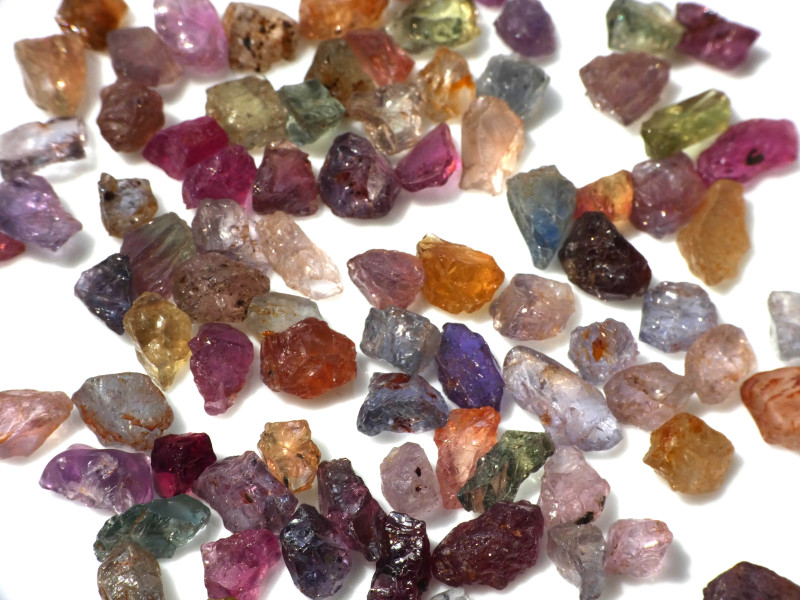
Sapphire Formation & Nneɛma a Wɔde Yɛ Adwuma
Corundum abo no ba wɔ abotan a ɛyɛ metamorphic anaa igneous mu.
Wɔ abotan a ogya wom mu no, ɔbo no yɛ ahwehwɛ bere a ɔbotan no dwo fi magma mu no. Ɛsɛ sɛ ɔbotan a ɛyɛ ogya no yɛ nea aluminium pii wom na silica nni mu.
Wɔ abotan a ɛsakra mu no, ahwehwɛ no taa ba bere a tete po ase dan fi nsu a ɛyɛ hyew a aluminium pii wom mu no.
Mpɛn pii no, tumi horow a efi abɔnten te sɛ wim tebea sɛe bubu ɔbotan a atwa safir no ho ahyia no. Afei nsu de ɔbo no kɔ mmeae a nsu a ɛtɔ te sɛ nsubɔnten.
Mmeae a Wɔtu Tuo
Safir fibea a eye sen biara betumi agyina kɔla a worehwehwɛ so, bruu pɔtee bɛn mpo. Fibea a ɛho hia sen biara wɔ abakɔsɛm mu ne nnɛ ne Sri Lanka.
Sri Lanka da nkyɛn a, mmeae atitiriw a wonya safir aboɔden abo ne:
Australia
Kashmir, India, na ɛwɔ hɔ
Kenya
Laos
Madagascar
Montana, U.S.A., na ɛwɔ hɔ
Myanmar (Burma) na ɛwɔ hɔ.
Tanzania na ɛwɔ hɔ
Thailand
Vietnam
Mpɛn pii no, wubehu faako a safir fifi mfiase sɛ ɛyɛ aguadi din a wɔde kyerɛkyerɛ mu, te sɛ “Burmese,” “Kashmir,” anaa “African.” Safir a ɛyɛ papa a efi mmeae bi betumi anya su koro, nanso eyi nnyina hɔ mma safir a efi saa fibea no nyinaa . Nea ɛka ho no, ɛnyɛ bere nyinaa na aguadi din a egyina mpɔtam hɔ so no yɛ nokware. Aboɔden abo adansedi krataa a agye din ye ma hwɛ hu sɛ ɛyɛ nokware.
Sɛ yɛde fibea ahorow to nkyɛn a, so safir bo yɛ den? Ɛtɔ mmere bi a, nanso nneɛma bo gu ahorow.

Sapphire Gemstone Bo & Ne Bo
Aboɔden abo a wɔde safir ayɛ no fi ase fi dɔla 5 wɔ carat biako mu na ɛkɔ soro bɛboro dɔla 40,000 wɔ carat biara mu. Ase hɔ no, yɛakyerɛkyerɛ safir bo a ɛsono carat biara mu wɔ bo a ɛkɔ fam mu. Saa nneɛma bo yi ka carat-mu duru nyinaa ho.
Blue Sapphire Nneɛma Bo a Ɛwɔ Hɔ
Faceted Kashmir sapphire bo a wɔakyerɛw sɛnea ɛyɛ papa:
Atifi : $9,000-$50,000 wɔ carat biara mu
Eye paa : $7,000-$42,000 wɔ carat biara mu
Eye : $2,400-$22,500 wɔ carat biara mu
Safire bruu bo a ɛnyɛ Kashmirfo anim:
Atifi : $1,400-$10,500 wɔ carat biara mu
Eye paa : $480-$8,100 wɔ carat biara mu
Eye : $250-$6,300 wɔ carat biara mu
Fair : $210-$4,800 wɔ carat biara mu
Blue sapphire cabochons gye $20-$300 wɔ carat biara mu.
Pink & Padparadscha Safire Nneɛma Bo
Nea edi hɔ wɔ bo a ɛsom ne Padparadscha safir a ɛwɔ afã horow:
Atifi : $1,000-$25,000 wɔ carat biara mu
Eye paa : $950-$22,000 wɔ carat biara mu
Eye : $900-$20,000 wɔ carat biara mu
Wɔ faceted pink sapphires bo so:
Eye paa : $160-$8,400 wɔ carat biara mu
Eye : $140-$7,800 wɔ carat biara mu
Fair : $50-$1,050 wɔ carat biara mu
Afoforo Fancy Kɔla Sapphire Bo
Safir a ɛwɔ kɔla afoforo a ɛyɛ fɛ a ɛwɔ afã horow no bo:
Safir a Ɛyɛ Kɔkɔɔ : $280-$1,840 wɔ carat biara mu
Safir Kɔkɔɔ : $50-$1,625 wɔ carat biara mu
White Sapphires : $50-$800 wɔ carat biara mu
Green Sapphires : $20-$240 wɔ carat biara mu
Black Sapphires : $4-$290 wɔ carat biara mu
Safire Ahorow Bo a Ɛyɛ nwonwa
Safir a ɛwɔ afã horow a ɛsakra kɔla no fi dɔla 120 kosi dɔla 5,000 wɔ carat biara mu.
Nsoromma mu safir bo:
Fancy Color : $100 kosi $500 wɔ carat biara mu
Blue : $20 kosi $1,200 wɔ carat biara mu
Tuntum : $13 kosi $30 wɔ carat biara mu
Ansa na yɛbɛwie no, yɛbɛkyerɛ wo sɛnea wobɛhwɛ wo safir.
Sapphire Hwɛ ne Nsiesiei
Esiane sɛ safir dodow no ara tumi kyɛ nti, ɛfata sɛ wɔhyɛ da biara da na enhia sɛ wɔhwɛ aboɔden abo so kɛse .
Wɔ kɔla a ɛyera ho no, ɛkame ayɛ sɛ safir biara bɛyera kakra bere a ɛda owia mu kyɛ no. Safir kɔkɔɔ ne ɛtɔ mmere bi a Padparadscha no yɛ nea ɛyɛ mmerɛw sɛ owia bɛyera. Nea ɛyɛ anigye no, agudeyɛfo pii gyaw safir kɔkɔɔ ma wɔn kɔla yɛ kɛse, na ɛno yɛ adwuma. Safir kɔkɔɔ kɔla a ɛbɛkɔ so agyina pintinn no gyina ade a ɛma kɔla no so.
Nneɛma a ɛpaapae, nneɛma a wɔde ka ho pii, akisikuru a wɔde hyɛ mu ma, ne ngo a wɔde sa safir no ma safir yɛ mmerɛw. Ma saa ahorow yi ntwe wo ho mfi nnuru a ano yɛ den anaa mfiri a wɔde siesie nneɛma ho.
Wubetumi de mfiri nhyehyɛe te sɛ ultrasonic anaa steam cleaners asiesie safir afoforo dodow no ara. Nanso, ɔkwan a ahobammɔ wom sen biara a wɔfa so tew sẽ ne sɛ wɔde brɔs a ɛyɛ mmerɛw, nsu a ɛyɛ hyew, ne samina a emu nyɛ den.
Safir yɛ den, enti etumi twetwe aboɔden abo dodow no ara. Ɛyɛ papa sɛ wode besie wɔ baabi a ɛda nsow wɔ aboɔden abo afoforo ho.

Safire Bɛn na Ɛkyere Wo Nnommum?
Ebedu saa bere yi no, wubetumi ahu nea enti a safir akura wɔn dibea a wobu no mu mfehaha pii no. Esiane sɛ anansesɛm, mfaso horow, ne kɔla ahorow dɔɔso nti, dɛn na ɛnsɛ sɛ yɛdɔ?
Woasiesie wo ho sɛ wobɛhwehwɛ nea w’ani gye ho? Kɔtɔ safir aboɔden abo nnɛ!
搜尋Gemstone Encyclopedia
相關拍賣
相關文章
Gem Rock Auctions wɔ Certified Gemstones a ɛso sen biara wɔ intanɛt so no mu biako. Hwehwɛ aboɔden abo sɔhwɛ afiri a wɔapene so yi mu.
24th Jul 2018
Hackmanite yɛ sodalite aboɔden abo a ɛyɛ pink kosi violet a wonim no sɛ ne kɔla-sesa ne hann soronko. Sua nea enti a hackmanite yɛ soronko, efi ne su ahorow a ɛntaa nsi so kosi hackmanite agude ahorow a ɛwɔ hɔ so.
28th Mar 2018
Amber yɛ tete dua a wɔatutu fam ayɛ, a mpɛn pii no afifide wɔ mu, a ɛtaa yɛ kɔkɔɔ-akutu na ɛyɛ mfe mpempem pii. Sua amber abakɔsɛm, ne bo, ne ne su!
8th May 2018
最新的文章
Nnua a wɔde asonse a wɔasen a wɔsan frɛ no nhabannuru asonse no yɛ abɔde mu ade a wɔde si asono asonse ananmu, na wotwa fi Amerika Kesee Fam phytelephas nnuadewa mu nnuadewa mu wɔ abrabɔ pa mu. Sua mmɛw asonse ho ade nyinaa wɔ akwankyerɛ yi mu!
15th Jan 2026
Chrysanthemum nhwiren abo yɛ abɔde mu anwonwade a ɛwɔ calcite, celestite, anaa andalusite nhwiren fitaa bi a wɔde asisi limestone tuntum anaa atɛkyɛ abo so.
13th Jan 2026
Rainbow lattice sunstone yɛ feldspar ahorow a ɛwɔ optical nsunsuanso abiɛsa fɛfɛ a efi nneɛma ahorow a wɔde ka ho a ɛwɔ hɔ no mu ba. Ɛyɛ ogya kɔla display ne lattice nsusuwso ma ɛyɛ coletor abohene a wɔntaa nhu!
12th Jan 2026
文章類別
How To's is where you will find helpful articles from gem Rock Auctions on how to cut gemstones, select gemstones and buy gemstones.
9文章








